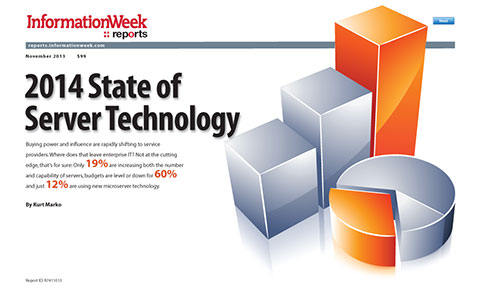What's The Greatest Software Ever Written?
Most red-blooded technologists will offer a quick opinion on what's the greatest software ever, but when you take the time to evaluate what makes software truly brilliant, the choices aren't so obvious.
One of the most significant pieces of programming I know wasn't even software. Before the British built the Colossus machine, which translated German teletype code during World War II, it took the Allies up to six hours to decode a message and a day or more to pore over intelligence, draw conclusions, and pass along information to military command. After Colossus, the Allies gained a picture of German military activity across the English Channel as the day unfolded--intelligence that gave Gen. Dwight Eisenhower the confidence to launch the D-Day invasion.
    Photo courtesy of NASA |
So where does that leave us? First, let's set criteria for what makes software great. Superior programming can be judged only within its historical context. It must represent a breakthrough, technical brilliance, something difficult that hadn't been done before. And it must be adopted in the real world. Colossus transformed a drawn-out mechanical process into electronics--it was an early computer--and provided a useful service by accelerating coded teletype translation. Colossus shaped history.
Another example of great programming was IBM's 360 system. The software was written as the first general-purpose computer operating system in 1964. Many of the truths we assume today about software--that simple designs are better than complicated ones, that a few skilled programmers will accomplish more than platoons of them--are captured in Frederick Brooks' book on the project, The Mythical Man-Month (Addison-Wesley Professional, 1995). Brooks already knew how many things could go wrong with big software projects before the 360 project began. In fact, he was a critic within IBM of carrying out the project at all; he thought it had too many potential points of failure. That's why IBM put him in charge of it, I suppose.
Wise that they did. The result was the first computer system capable of running different applications at the same time. It spawned the IBM line of mainframes, which evolved into the 370 Series and present zSeries. To this day, those systems remain backwardly compatible with Brooks' 360 operating system. Which leads me to another attribute of great software: It's got legs. It isn't easily superseded.
We Know Great
Everybody agrees the IBM 360 was one
of the greatest pieces of software ever written. Greatness is easier to
assess given a long historical perspective. The closer you get to the
present, however, the harder it is to name the greatest software.
Well, damn the torpedoes. With great insight, I've assembled this, my list of the greatest software ever written, from Colossus to the present. I've consulted software guru James Rumbaugh; Stuart Feldman, president of the Association of Computing Machinery; venture capitalists Ann Winblad and Gary Morgenthaler; Web site scripting software (PHP 3.0) authors Zeev Suraski and Andi Gutmans; and my little brother, Wally. The list remains my own, however. Those who find it full of wise and inspired choices can E-mail me at the address at the end of this story. For those who find it misguided, distasteful, or willfully ignorant, send your message to Wally, a 6-foot-3-inch former basketball star who still packs a wallop.
I've always been amazed at the Apollo spacecraft guidance system, built by the MIT Instrumentation Lab. In 1969, this software got Apollo 11 to the moon, detached the lunar module, landed it on the moon's surface, and brought three astronauts home. It had to function on the tiny amount of memory available in the onboard Raytheon computer--it carried 8 Kbytes, not enough for a printer driver these days. And there wouldn't be time to reboot in case of system failure when the craft made re-entry. It's just as well Windows wasn't available for the job.
The Apollo guidance system probably seems like routine software to technology sophisticates. Far more complex navigational systems are in operation today. The system's essentials were a few well-known algorithms based on proven logic. But to me, it's still rocket science. Great software dazzles us by virtue of what it does correctly in the face of everything that could go wrong.
 | |
IBM 360 had staying power | |
For that matter, our lives already are in the hands of such software. The Federal Aviation Administration spent hundreds of millions of dollars, not once, but three times, trying to build an effective air traffic control system. It has thrown out about half of what it has created, technology valued at $144 million, while the other half periodically hiccups and stalls. Great software? I'll stick with the Apollo guidance system. For software to be considered a success, it has to be up to handling the job it was created to do.
That axiom certainly applies to VisiCalc, the first spreadsheet software. It's great because it demonstrated the power of personal computing. The software put the ability to analyze and manipulate huge amounts of data into the hands of every business. But VisiCalc itself, despite representing a breakthrough concept, wasn't great software. It was flawed and clunky, and couldn't do many things users wanted it to do. The great implementation of the spreadsheet was not VisiCalc or even Lotus 1-2-3 but Microsoft Excel, which extended the spreadsheet's power and gave businesspeople a variety of calculating tools. Microsoft's claims that it makes great software are open to dispute, but the Excel spreadsheet is here to stay. Nearly everyone is touched by it.




















































































